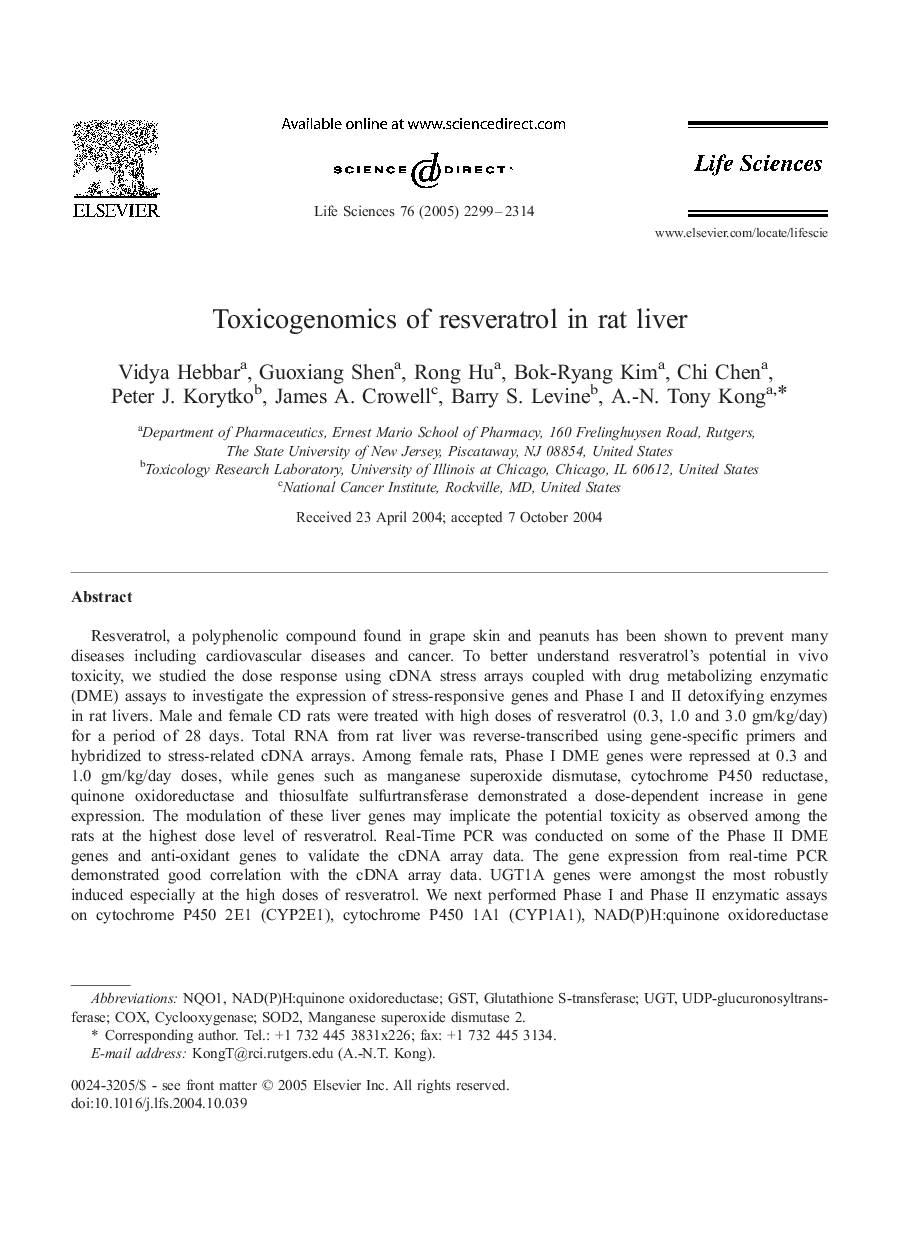| Article ID | Journal | Published Year | Pages | File Type |
|---|---|---|---|---|
| 2553837 | Life Sciences | 2005 | 16 Pages |
Resveratrol, a polyphenolic compound found in grape skin and peanuts has been shown to prevent many diseases including cardiovascular diseases and cancer. To better understand resveratrol's potential in vivo toxicity, we studied the dose response using cDNA stress arrays coupled with drug metabolizing enzymatic (DME) assays to investigate the expression of stress-responsive genes and Phase I and II detoxifying enzymes in rat livers. Male and female CD rats were treated with high doses of resveratrol (0.3, 1.0 and 3.0 gm/kg/day) for a period of 28 days. Total RNA from rat liver was reverse-transcribed using gene-specific primers and hybridized to stress-related cDNA arrays. Among female rats, Phase I DME genes were repressed at 0.3 and 1.0 gm/kg/day doses, while genes such as manganese superoxide dismutase, cytochrome P450 reductase, quinone oxidoreductase and thiosulfate sulfurtransferase demonstrated a dose-dependent increase in gene expression. The modulation of these liver genes may implicate the potential toxicity as observed among the rats at the highest dose level of resveratrol. Real-Time PCR was conducted on some of the Phase II DME genes and anti-oxidant genes to validate the cDNA array data. The gene expression from real-time PCR demonstrated good correlation with the cDNA array data. UGT1A genes were amongst the most robustly induced especially at the high doses of resveratrol. We next performed Phase I and Phase II enzymatic assays on cytochrome P450 2E1 (CYP2E1), cytochrome P450 1A1 (CYP1A1), NAD(P)H:quinone oxidoreductase (NQO1), glutathione S-transferase (GST) and UDP-glucuronosyl transferase (UGT). Induction of Phase II detoxifying enzymes was most pronounced at the highest dose of resveratrol. CYP1A1 activity demonstrated a decreasing trend among the 3 dose groups and CYP2E1 activity increased marginally among female rats over controls. In summary, at lower doses of resveratrol there are few significant changes in gene expression whereas the modulation of liver genes at the high dose of resveratrol may implicate the potential toxicity observed.
